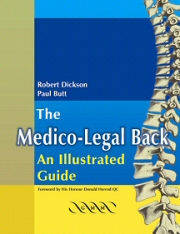6 - Spinal Fractures and Dislocations
Published online by Cambridge University Press: 10 December 2009
Summary
While soft tissue musculo-ligamentous strains and contusions occur with fairly low violence once the energy considerations rise appreciably then the spinal column is open to significant structural failure. Bones can be broken (fractures), joints can be torn apart (dislocations) and an injury can have a bit of both (fracture–dislocation).
The prevalence of these injuries is rising all the while, mostly in association with steadily increasing traffic density, and the incidence of paralysis is approaching one hundred per million population per year. Neck (cervical) injuries are the commonest, being more than twice as frequent as thoracic injuries with lumbar injuries in between. This is because the neck and lower back have much bigger ranges of motion, while the intervening thoracic intervertebral joints allow much less motion and are further splinted by the attached chest wall (ribs and breast bone). It, therefore, takes bigger energies to fracture or dislocate the thoracic spine and, moreover, there is much less space in the thoracic spine for the spinal cord compared to the cervical and lumbar regions. Not surprisingly, paralysis in association with thoracic spinal injuries is twice as common as with lumbar injuries (43% versus 21%) (Table 6.1).
While the paralysis rate seems very high, the majority fortunately recover and it is important to differentiate patients with complete paralysis on admission from those with partial paralysis since the latter have a very much better prognosis for neurological recovery.
- Type
- Chapter
- Information
- The Medico-Legal Back: An Illustrated Guide , pp. 121 - 142Publisher: Cambridge University PressPrint publication year: 2003



